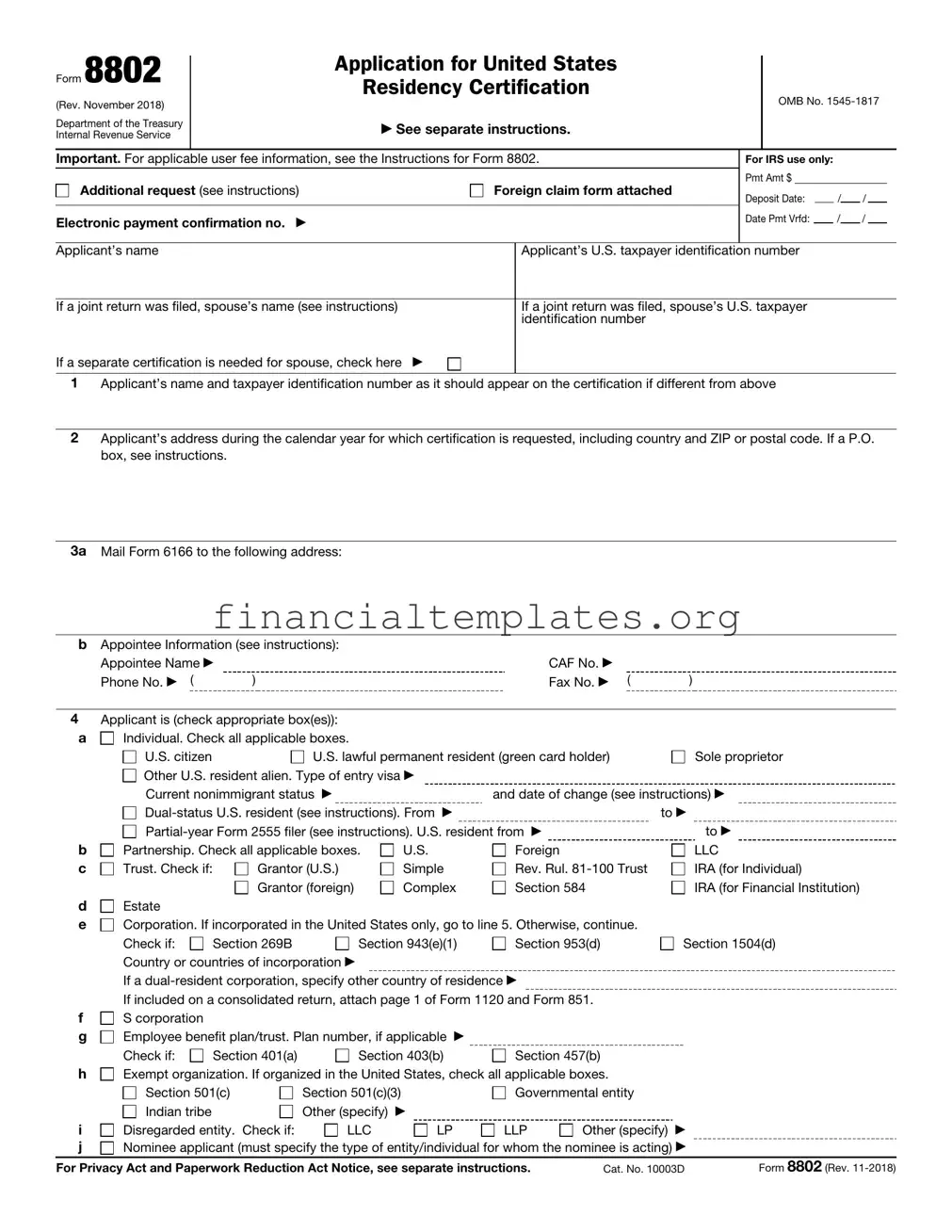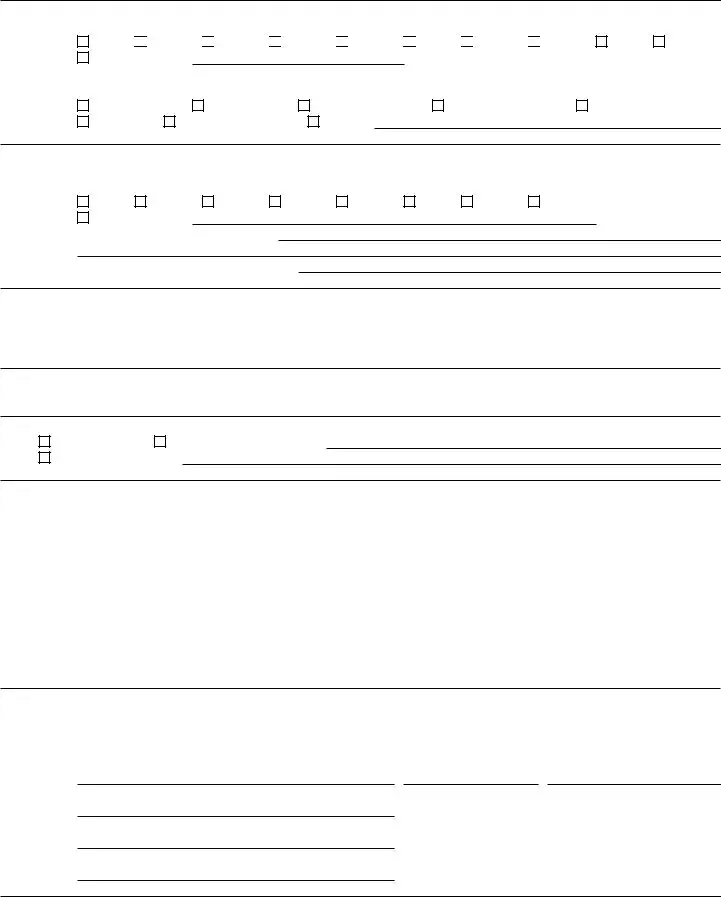The IRS Form W-9, officially titled "Request for Taxpayer Identification Number and Certification," shares similarities with IRS Form 8802, as both forms involve the provision of taxpayer identification numbers and certain tax-related certifications. While Form 8802 is focused on obtaining a United States residency certification for international tax purposes, Form W-9 is commonly used domestically to confirm a person's taxpayer identification number (TIN) for reporting purposes. Each document plays a crucial role in ensuring compliance with tax laws and facilitating accurate reporting.
Form W-8BEN, titled "Certificate of Foreign Status of Beneficial Owner for United States Tax Withholding," is another document related to Form 8802 in that it involves international taxation matters. Form W-8BEN is used by foreign individuals to certify their non-U.S. residency status to avoid or reduce withholding on income connected to U.S. sources, aligning with the objective of Form 8802 to certify U.S. residency for avoiding dual taxation. Both forms address cross-border tax issues but from opposite perspectives.
Form 1040, the U.S. Individual Income Tax Return, correlates with Form 8802 since individuals applying for U.S. residency certification might have their tax obligations assessed based on income reported on Form 1040. The linkage between these documents arises because the tax status, residency, and income information declared on Form 1040 can be a basis for the residency certification provided by Form 8802.
Form 1120, "U.S. Corporation Income Tax Return," is pertinent for corporations seeking U.S. residency certification through Form 8802, especially for those involved in international business activities. Just as individuals use Form 1040, corporations use Form 1120 to report their income, gains, losses, deductions, and credits to the IRS. The connection lies in proving a corporation's tax residency and compliance with U.S. tax obligations to support applications on Form 8802.
Form 5472, "Information Return of a 25% Foreign-Owned U.S. Corporation or a Foreign Corporation Engaged in a U.S. Trade or Business," is intricately linked with Form 8802 in terms of addressing international taxation aspects. Both forms are pivotal for foreign entities operating within the U.S., with Form 5472 focusing on the disclosure of transactions between U.S. corporations and their foreign shareholders, and Form 8802 serving to establish U.S. tax residency for purposes of treaty benefits.
Form 1065, "U.S. Return of Partnership Income," akin to Form 8802, is essential for partnerships that need to prove their U.S. residency status or compliance with U.S. tax laws, particularly when engaging in international transactions. Partnerships use Form 1065 to report their financial status and operations to the IRS, which can be requisite information when applying for U.S. residency certification through Form 8802.
Form 2555, "Foreign Earned Income," is relevant for U.S. citizens or resident aliens reporting income earned abroad, which can directly impact the application process of Form 8802. The purpose of Form 2555 is to claim the foreign earned income exclusion, and its use indicates the taxpayer's international financial engagements, a context within which Form 8802's certification might be sought to clarify the individual's U.S. tax residency status.
Form 8832, "Entity Classification Election," while primarily serving for entities to elect their classification for U.S. tax purposes, intersects with the purpose behind Form 8802 in that both forms involve decisions impacting an entity's taxation in an international context. Entities may file Form 8832 to be treated differently under U.S. tax law, affecting how they might approach or benefit from the residency certification provided by Form 8802.






 1040
1040 
 1041
1041 
 1065
1065 
 1120
1120 
 1120S
1120S 
